Sri Lanka, an island nation in the Indian Ocean, is well known for its extensive and historically significant cultural legacy. A melting pot of various cultures, religions, and races, the nation has influenced the island’s history, architecture, fine arts, and food. The cultural heritage of Sri Lanka is a reflection of the island’s complicated past and lively present, from the prehistoric kingdoms of Anuradhapura and Polonnaruwa to the colonial-era structures in Colombo. This article will look at some of Sri Lanka’s most amazing cultural legacy, including its famous temples, historic monuments, and traditional arts and crafts.
1. The sacred city of Anuradhapura
It was Sri Lanka’s capital for the longest and is the oldest capital to have done so. When king Pandukabhaya designated it as the capital of the Sinhalese people, it quickly became one of Asia’s major towns, with affluent monastic complexes, hundreds of temples, and an advanced irrigation system. The Silk Road, a historic trade route linking South and Central Asia with the Middle East and Europe, was responsible for its prosperity. Anuradhapura, located 205 kilometers from Colombo, has several well-preserved remnants of old palaces and other structures.
The city of Anuradhapura was named after a Minister by the name of Anuradha, who established this region as a hamlet settlement, according to Mahavamsa, the historical chronicle of Sri Lanka. He was one of the ministers that traveled with Indian king Vijaya, who is credited with establishing the Sinhalese Race in Sri Lankan the fourth century BC, king Pandukabhaya designated it as his capital. Buddhism was introduced to Sri Lanka during the reign of his grandson, king Devanampiyatissa, by Arhath Mahinda Thero, an Indian emperor’s son. In the middle of the third century BC, 236 years had passed after the death of Lod Buddha. A vast civilization founded on Buddhism, one of South East Asia’s most revered religions, began to emerge from this point on. A must-visit tourist attraction for everyone who wants to observe what Sri Lanka was like two thousand years ago is Anuradhapura. In the middle of the sacred city is the Sri Maha Bodhi, a branch of the exact tree where Buddha obtained nirvana. This tree, which was planted in 249 BC, is the oldest one ever discovered.
The Jetawana Stupa of the Jetawanaramaya Aramic Complex in Anuradhapura, which was constructed in the third century, was once 400 feet (122 meters) tall and ranked third in the world. The Jethawanaramaya remains the highest structure of its sort in the world even today as a brick monument.
In order to accommodate all types of guests, the new city of Anuradhapura is peppered with everything from luxury hotels to modest homestays. A tuk tuk, a three-wheeler, or a rented bicycle are the best ways to get to these sites. Few rental bicycles are often available at inns.
Ruwanweliseya
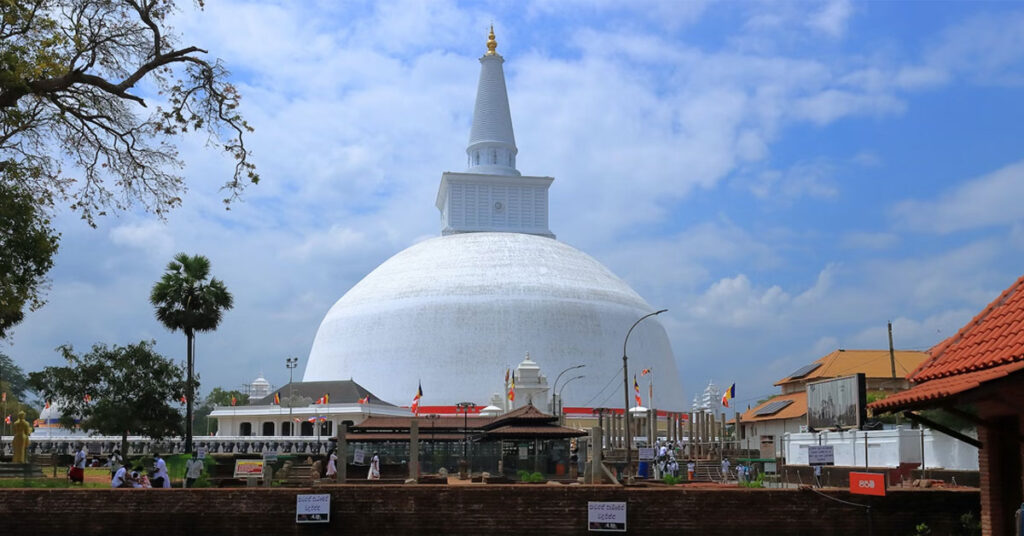
King Dutugamunu, the Hero of the Nation, who was born in the Ruhuna region, which was destined to give birth to the majority of the glorious heroes of the island nation of Sri Lanka from the ancient era to the modern day, built the Ruwanweliseya Stupa (Ruwanveli Seya Stupa), the foremost of the supremely glorious ancient living monuments of Sinhalese Buddhist Heritage at the city of Anuradhapura. Among the great historic stupas (dagobas) in Sri Lanka, Ruwanweliseya Stupa (Ruwanveli Seya Stupa), also known as Maha Stupa (Sinhala: the great dagoba), Ratnapali Stupa, or Swarnamali stupa, has received the most love and respect.
Abhayagiriya
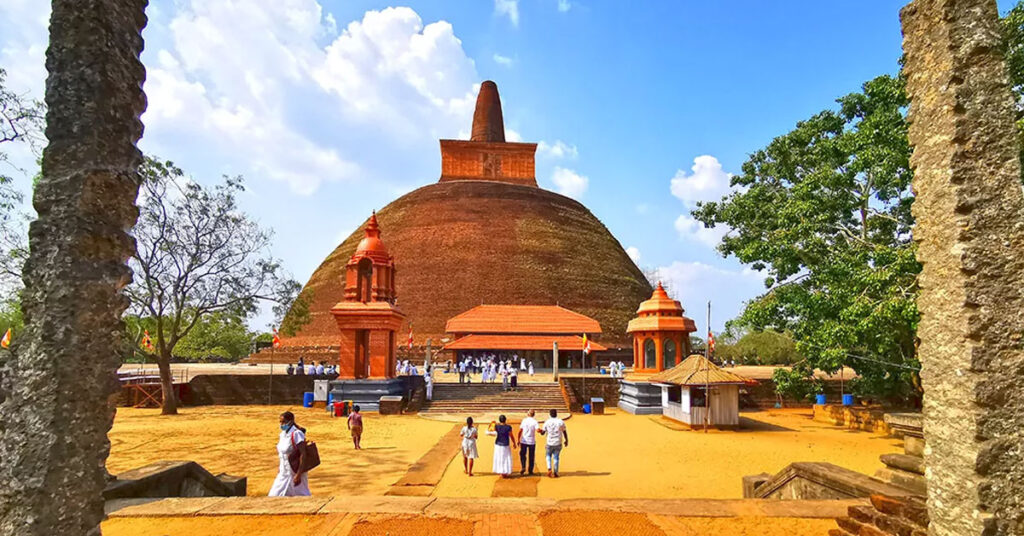
Anuradhapura, a holy city, is home to the Abhayagiri Vihara. This stupa is thought to have been constructed by King Vattagamini Abaya, also known as King Walagamba. A Jain temple dating to the reign of King Pandukhabhaya in the fifth century BC has been discovered in Sri Lanka. This stupa is the subject of several stories. A chronicle claims that on his third trip to Sri Lanka, the Buddha stopped at a location called “Seela Chetiya” in Anuradhapura. Between this location and Abhayagiriya is Deepawamsa. The stupa is thought to have been constructed on the footprint of Buddha. As a result, it is implied that the location of the existing Abhayagiri Stupa may have been the site of the Seela Chetiya.
Avukana Buddha Statue
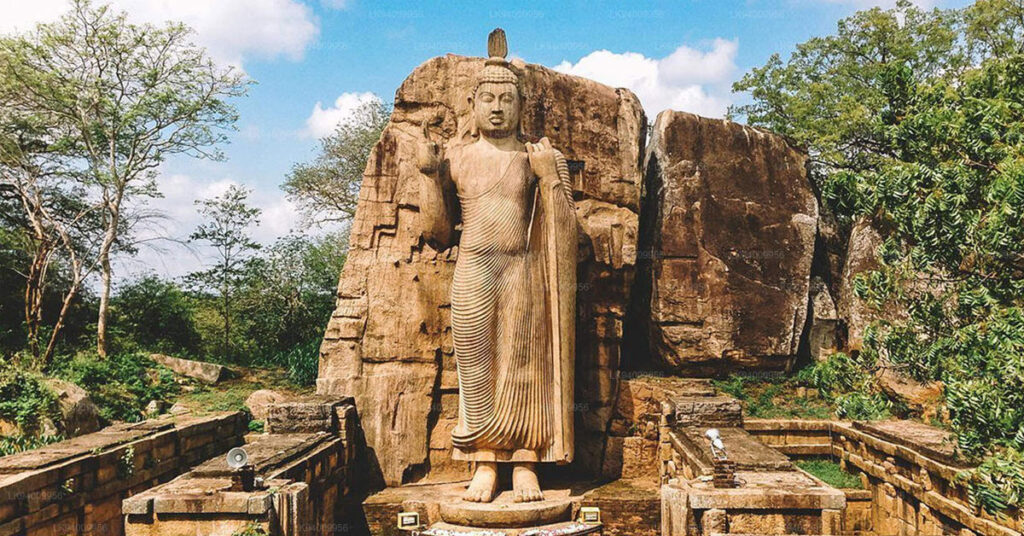
When one examines the intricate works of art that date back thousands of years, in so many areas on the island, it is clear that the ancient Sinhalese were extremely adept in construction and sculpture. Paintings, sculptures, and other artifacts that reflect the life and times of Lord Buddha are fascinating because Buddhism has long been the center of our civilization, passing on a wealth of wisdom to coming generations. Among all the magnificent works of art in Sri Lanka, the Avukana statue, which shows Lord Buddha in the ashiva mudra position, stands out both literally and symbolically. It is a captivating building. Although its creator is unknown, study has shown that it belongs to the fifth century, during the rule of King Datusena, one of Sri Lanka’s most notable kings, who ruled from 459 to 477 AD. It stands at 12 meters and is 10 feet across at the shoulders. The Avukana monument is thought to be the outcome of a contest between a teacher and student, in which the teacher triumphed. It’s noteworthy to note that the entire figure is still attached to the large granite face from which it was cut. It is imperative that you take advantage of the opportunity to visit Avukana, Sri Lanka, which is only a short drive from Uga Ulagalla.
Samadhi Buddha Statue
The Samadhi Statue is a statue that can be found at Sri Lanka’s Anuradhapura’s Mahamevnwa Park. The Buddha is shown in the Dhyana Mudra, a meditation pose connected to his initial Enlightenment, also known as Nirvana. According to the believer’s philosophical stance, the Buddha’s Enlightenment may have been the so-called Samadhi experience or some other phenomena. The Buddha is seated cross-legged in the Dhyana Mudra, his uplifted palms crossed on his lap. This statue is among the most prevalent examples of Buddhist sculpture since this pose is well-known throughout the Buddhist world. It should not be mistaken with the extremely similar “Earth-Touching Mudra,” which shows the Buddha’s easy defense against Mara’s projections of illusions, which included the idea that the entire world was an illusion. Mara was anxious to keep the Buddha from realizing this. The granite monument is 8 feet tall and has intricate carvings.
Jaya Sri Maha Bodhi
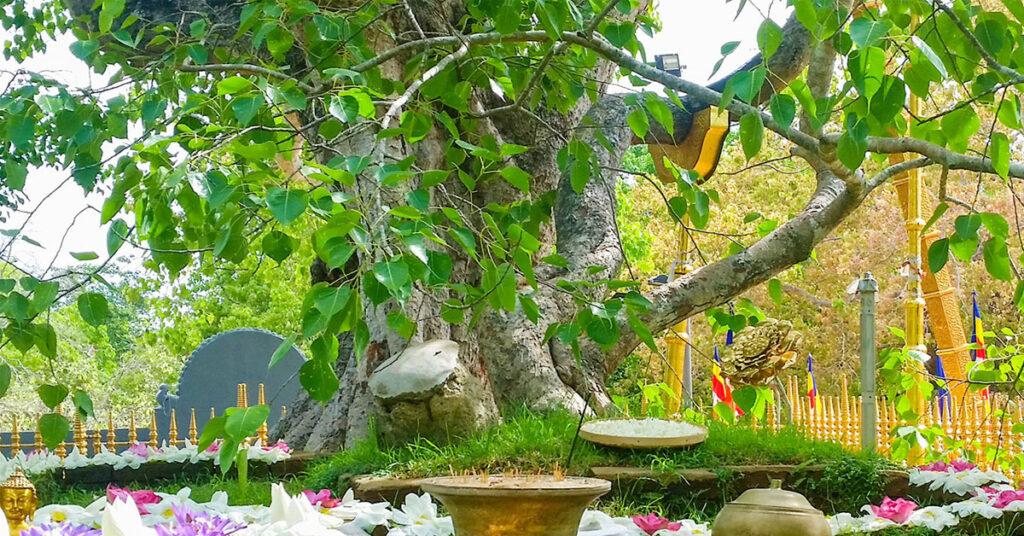
The oldest tree known to humankind is the Sacred Bo tree, or Jaya Sri Maha Bodhiya, of Anuradhapura, Sri Lanka. It is a young tree from the legendary Bodhi tree, beneath which Buddha attained enlightenment. It is the oldest known living human-planted tree in the world and dates back to 288 BCF. The Ven. Sanghamitta Therini, a sister of Arhant Mahinda, who brought the Buddha’s teachings to Sri Lanka, carried it from Buddhagaya, India. Ruwanweliseya Dagoba, the Brazen Palace, and the Sri Maha Bodhi were all likely previously a part of the Great Temple. The Sacred Bodhi tree is the oldest historically verified tree in the world. It has been looked after for more than 2000 years, even during periods when India was occupying the area.
Isurumuniya Temple
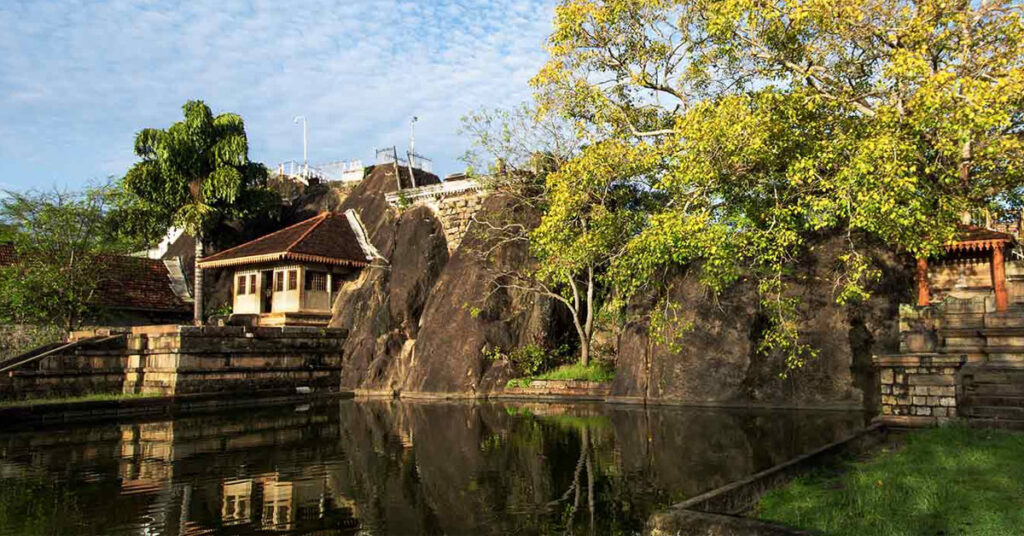
Devanampiya Tissa ruled the nation from the capital city of Anuradhapura at the time the Isurumuniya Viharaya was built. In order to accommodate the 500 upper caste children who were ordained during his reign, Isurumuniya was constructed as a monastic complex. After then, King Kasyapa (473–491 AD) restored it and gave it the new name “Boupulvan Kasubgiri Radmaha Vehera”—a combination of his name and the names of his two daughters. There is a cave with a cliff above it that is attached to the Temple. Later thereafter, a tiny Dagoba was erected on this cliff. A rock that appears to emerge out of a pond may be seen on either side of a gap at the scenic entrance to Isurumuniya.
Kala Wewa
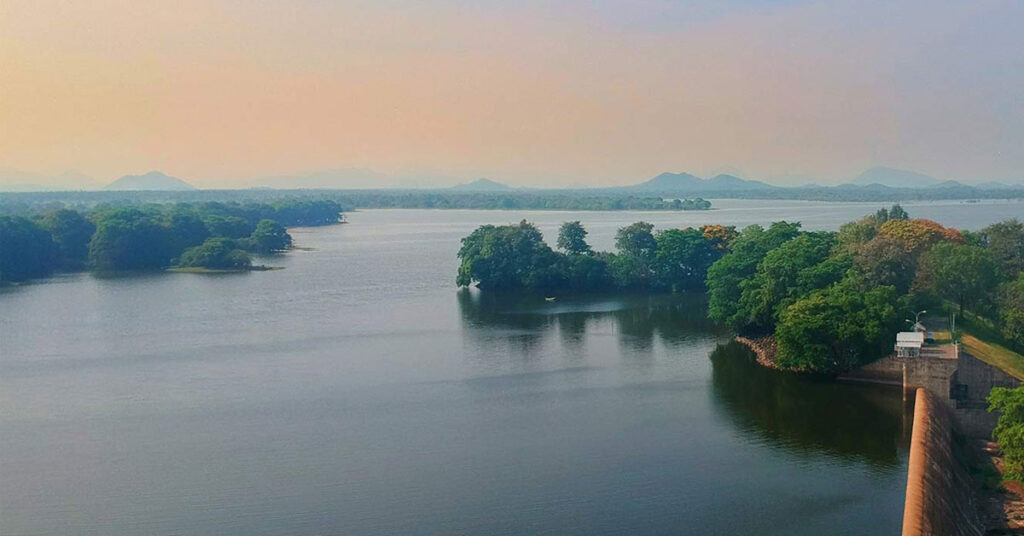
The twin reservoir complex of Kala Wewa and Balalu Wewa, which King Datusena erected in 307 B.C., has a capacity of 123 million cubic meters. This reservoir complex is equipped with three main sluices and a spillway made of stone. Another marvel of the prehistoric hydraulic engineering facility in ancient Ceylon, the Tissa Wewa meanders over 87 km (54 mi) at a slope of 6 inches per mile and ends at the historical capital Anuradhapura city tank. It is 40 feet wide and conveys water to feed thousands of acres of paddy lands.
Await Second Episode of this article